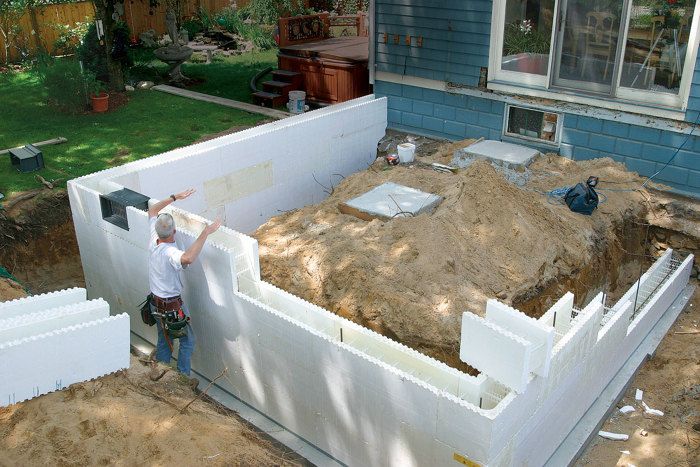
A builder planning a high-efficiency spec house wants to insulate the foundation walls, and is considering a type of panel that incorporates an inner layer of rigid foam insulation and two outer layers of concrete. Will it work?
Related articles from GBA
Green Basics: Insulated concrete forms
Should Insulated Concrete Forms be Air-Sealed?
Code Green: Mass Walls Increase Insulation Value
How to Finish Exterior Foundation Insulation
Peter Fusaro likes what he hears. The concrete protects the foam from damage, making this approach more appealing than leaving foam exposed on the exterior. He understands that 2 in. of extruded polystyrene insulation will give the wall an R-value of more than 19. That’s the premise he takes to the Q&A forum at GreenBuildingAdvisor, and that’s the subject of this week’s Q&A Spotlight.
To GBA senior editor Martin Holladay, what Fusaro is describing sounds like the Thermomass Building Insulation System, which does claim an R-value of 19.27 for the 10-in. thick panel.
But as Holladay points out, the foam insulation only adds up to R-10. Don’t mix up the effects of thermal mass with R-value, he warns.
Another concrete-and-foam option is insulating concrete forms. But in both cases, there’s some question on what benefit, if any, Fusaro will reap from the thermal mass of the concrete. At least one reader thinks the effect will be minimal.
Read the whole article at Green Building Advisor.
Fine Homebuilding Recommended Products
Fine Homebuilding receives a commission for items purchased through links on this site, including Amazon Associates and other affiliate advertising programs.

Reliable Crimp Connectors

Affordable IR Camera

Handy Heat Gun




























View Comments
Have seen many poor insulation jobs and few moving to better practices. Doing some google I found a U. of Waterloo study helpful when considering retro fitting basement insulation and moisture issues.